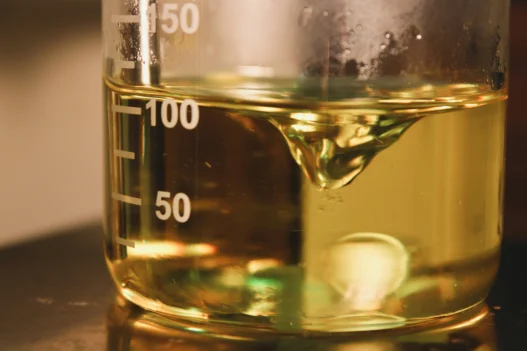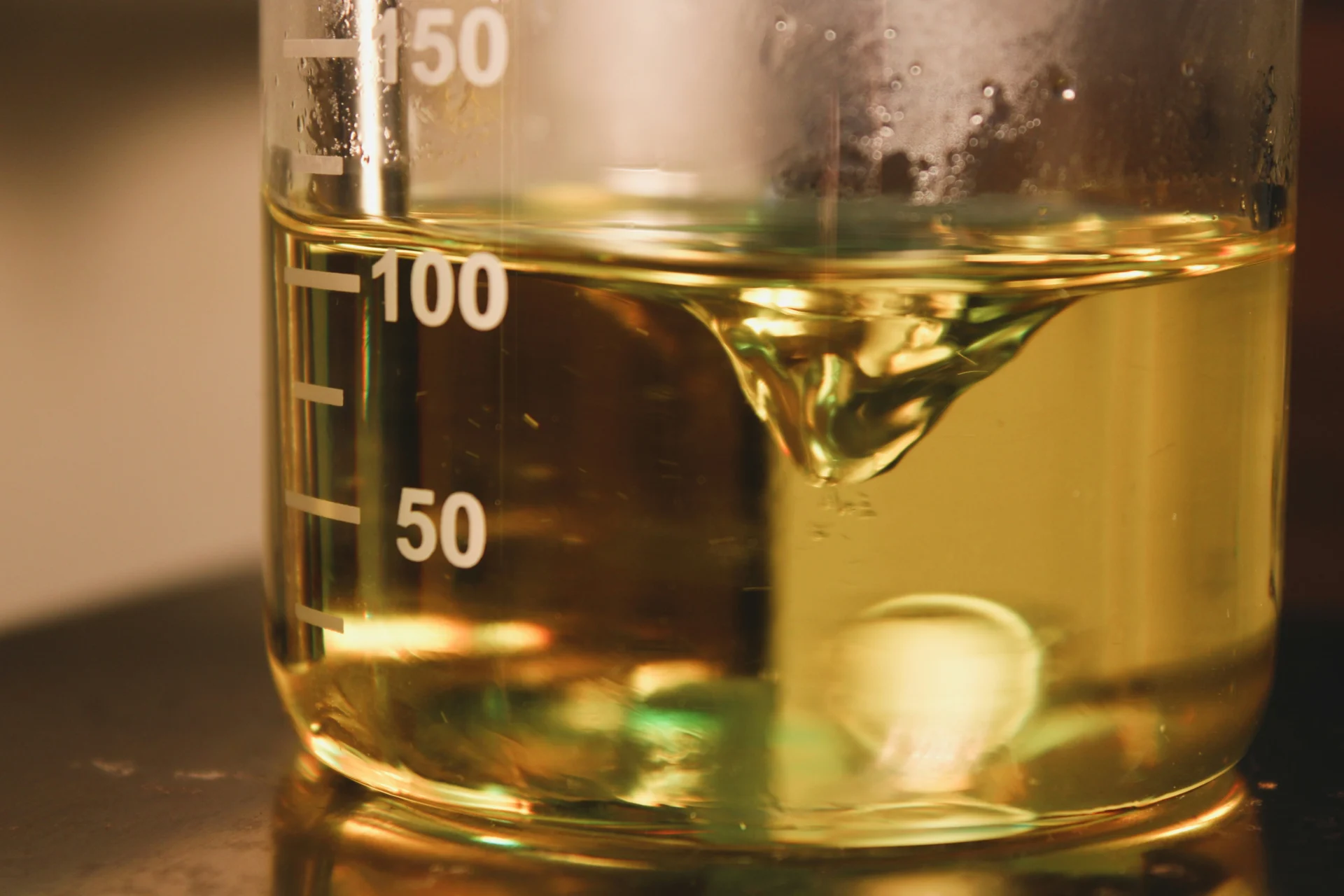4′-Isopropylacetophenone is a chemical compound commonly used as a flavoring agent in the food industry, as well as a fragrance ingredient in perfumes and cosmetics. Its aromatic properties make it a valuable component in a variety of consumer products, from scented candles to air fresheners. Furthermore, 4′-Isopropylacetophenone is also used in the pharmaceutical industry as an intermediate in the synthesis of various medications. Its versatility and utility in multiple industries highlight its relevance to everyday life, as it plays a crucial role in shaping the sensory experiences and therapeutic treatments that individuals encounter on a daily basis.
Table of Contents:
- 💡 Commercial Applications
- ⚗️ Chemical & Physical Properties
- 🏭 Production & Procurement
- ⚠️ Safety Considerations
- 🔬 Potential Research Directions
- 🧪 Related Compounds
💡 Commercial Applications
4′-Isopropylacetophenone, also known as p-isopropylacetophenone, has several commercial and industrial applications. One of its primary uses is as a fragrance ingredient in perfumes and cosmetics. It is also used as a flavoring agent in food products due to its aromatic properties.
In the industrial sector, 4′-Isopropylacetophenone is utilized as an intermediate in the production of various chemicals. It is commonly employed in the synthesis of pharmaceuticals, agrochemicals, and other fine chemicals. Additionally, it serves as a key ingredient in the manufacturing of plastics, resins, and polymers.
In terms of drug and medication applications, 4′-Isopropylacetophenone plays a crucial role in the pharmaceutical industry. It is used as a building block for the synthesis of active pharmaceutical ingredients (APIs) in medications. This compound aids in the production of analgesics, antipyretics, and anti-inflammatory drugs, among others. Its versatility and compatibility with different drug formulations make it a valuable component in the healthcare sector.
⚗️ Chemical & Physical Properties
4’-Isopropylacetophenone appears as a colorless to light yellow liquid with a sweet, floral odor.
The molar mass of 4’-Isopropylacetophenone is 164.23 g/mol, with a density of 0.973 g/cm3. This molar mass is comparable to common food items such as sugar (180.16 g/mol) and salt (58.44 g/mol), while its density is similar to water (1 g/cm3).
The melting point of 4’-Isopropylacetophenone is 13-15°C, and its boiling point is 200-202°C. This melting point is lower than common food items like butter (32-35°C) and chocolate (34-38°C), while its boiling point is higher than water (100°C).
4’-Isopropylacetophenone is insoluble in water and has a low viscosity. Its solubility in water is similar to oil, and its viscosity is lower than honey or syrup.
🏭 Production & Procurement
4′-Isopropylacetophenone is typically produced through the Friedel-Crafts acylation of acetophenone using isopropyl chloride as the acylating agent. This reaction is catalyzed by Lewis acids such as aluminum chloride or iron(III) chloride. The isopropyl group is introduced onto the aromatic ring, resulting in the formation of 4′-Isopropylacetophenone.
4′-Isopropylacetophenone can be procured commercially from chemical suppliers or pharmaceutical companies that manufacture aromatic ketones. It is usually available in solid form as a white to off-white crystalline powder. The compound can be transported in sealed containers to prevent exposure to moisture or contaminants during transit. Proper labeling and documentation are essential for the safe handling and transportation of 4′-Isopropylacetophenone.
Upon receipt, 4′-Isopropylacetophenone should be stored in a cool, dry place away from direct sunlight and sources of ignition. It is important to adhere to the recommended storage conditions to prevent degradation or loss of potency. Proper handling procedures, such as the use of personal protective equipment, should be followed when working with 4′-Isopropylacetophenone to minimize the risk of exposure and ensure safety in the laboratory or industrial setting.
⚠️ Safety Considerations
Safety considerations for 4′-Isopropylacetophenone include handling the compound with caution due to its potential to cause skin and eye irritation. It is important to wear appropriate personal protective equipment when working with this chemical, such as gloves, goggles, and a lab coat. Additionally, 4′-Isopropylacetophenone should be stored in a well-ventilated area away from heat sources and incompatible materials to prevent accidents or chemical reactions.
Hazard statements for 4′-Isopropylacetophenone include “Causes skin irritation” and “Causes serious eye irritation.” These statements indicate the potential health risks associated with exposure to this compound, emphasizing the importance of proper handling and protection to avoid skin and eye contact. It is crucial to follow safety protocols and guidelines when working with 4′-Isopropylacetophenone to minimize the risk of harm.
Precautionary statements for 4′-Isopropylacetophenone include “Wear protective gloves/eye protection” and “Wash hands thoroughly after handling.” These statements highlight the recommended safety measures to take when working with this chemical, emphasizing the importance of wearing appropriate personal protective equipment and practicing good hygiene to prevent exposure and minimize risks to health. It is essential to follow these precautionary statements to ensure safe handling of 4′-Isopropylacetophenone in laboratory or industrial settings.
🔬 Potential Research Directions
One potential research direction for 4′-Isopropylacetophenone is in the field of organic chemistry, exploring its synthesis and reaction mechanisms. Studies could focus on optimizing reaction conditions to improve yields and selectivity of desired products.
Another research avenue could involve investigating the pharmacological properties of 4′-Isopropylacetophenone, such as its potential as a pharmaceutical compound or its effects on biological systems. This research could contribute to the development of new drugs or provide insight into the compound’s mechanism of action.
Furthermore, research could be conducted on the potential industrial applications of 4′-Isopropylacetophenone, such as its use as a flavoring agent, fragrance compound, or in the synthesis of other organic compounds. Studies could explore the compound’s stability, solubility, and compatibility with other materials.
Additionally, research on the environmental impact of 4′-Isopropylacetophenone could be another fruitful direction, investigating its biodegradability, toxicity, and potential for bioaccumulation. This research could provide valuable information for regulatory agencies and industries using the compound.
🧪 Related Compounds
Analogous to 4′-isopropylacetophenone is 4′-ethylacetophenone, which features a similar molecular structure with the substitution of an ethyl group in place of the isopropyl group. This compound is also utilized in various industrial applications, such as fragrance production and as a chemical intermediate in organic synthesis processes. The presence of the ethyl group can impart different physical and chemical properties compared to 4′-isopropylacetophenone, making it valuable for specific purposes.
Another similar compound to 4′-isopropylacetophenone is 4′-methylacetophenone, where a methyl group substitutes the isopropyl group in the molecular structure. This compound shares some chemical characteristics with 4′-isopropylacetophenone due to the presence of the aromatic ring and ketone moiety, making it suitable for various applications in the chemical industry. The slight structural variation introduced by the methyl group can influence the compound’s reactivity and solubility, impacting its role in different chemical processes.
Additionally, 4′-butylacetophenone bears resemblance to 4′-isopropylacetophenone with the substitution of a butyl group in the molecular structure. This compound exhibits similar chemical properties to 4′-isopropylacetophenone due to the presence of the acetophenone backbone, allowing for comparable applications in the chemical industry. The incorporation of the butyl group alters the compound’s physical properties, influencing factors such as boiling point and solubility, which can be advantageous in specific industrial processes.






